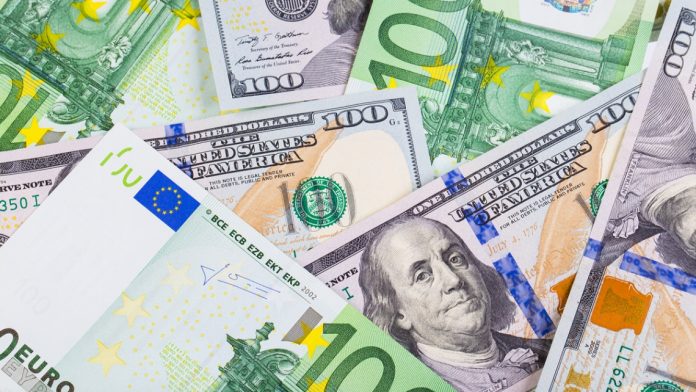After dipping early on Monday, the pound pared losses to finish the session more or less flat. The pound US dollar exchange rate dropped to a low of US$1.2905 before recovering back up to US$1.2935.
| What do these figures mean? |
|---|
| When measuring the value of a pair of currencies, one set equals 1 unit and the other shows the current equivalent. As the market moves, the amount will vary from minute to minute.For example, it could be written:1 GBP = 1.28934 USDHere, £1 is equivalent to approximately $1.29. This specifically measures the pound’s worth against the dollar. If the US dollar amount increases in this pairing, it’s positive for the pound. Or, if you were looking at it the other way around:1 USD = 0.77786 GBPIn this example, $1 is equivalent to approximately £0.78. This measures the US dollar’s worth versus the British pound. If the sterling number gets larger, it’s good news for the dollar. |
With little in the way of UK economic data, Brexit was front and central to pound movement on Monday. Brexit talks between the government and the opposition party continue. The pound picked up later in the day as reports surfaced that progress was finally being made in the cross-party talks. Both parties had an increased sense of urgency to move negotiations forward. The talks have now been going on for several weeks, since ministers rejected UK Prime Minister Theresa May’s Brexit deal for a third time.
The government is still aiming to get minister’s approval for the withdrawal before the European elections on May 22nd. Pound traders are less optimistic that this is achievable. The UK has until the 31st October to take a decision over Brexit.
The Bank of England will meet later this week and give its policy announcement. A six-month delay to Brexit is giving the policymakers the space to take a broader view on the UK economy. However, at the same time, lingering Brexit uncertainty is also making it unlikely that the central bank will hike rates. This is keeping a cap on the pound.
| Why do raised interest rates boost a currency’s value? |
|---|
| Interest rates are key to understanding exchange rate movements. Those who have large sums of money to invest want the highest return on their investments. Higher interest rate environments tend to offer higher yields. So, if the interest rate or at least the interest rate expectation of a country is relatively higher compared to another, then it attracts more foreign capital investment. Large corporations and investors need local currency to invest. More local currency used then boosts the demand of that currency, pushing the value higher. |
Dollar Dips On Inflation Stats
The dollar weakened later in the session, following weak personal consumption expenditure (PCE) data. THE PCE reading, which is the Fed’s preferred measure of inflation, declined to 1.6% in April, below the 1.7% forecast by analysts and down from March’s 1.7%. This data comes following Friday’s GDP data, which smashed expectations, but had pockets of weakness. The strong economic growth comes on an increase of unsold inventory, which is not sustainable.
The Fed will be in no rush to hike rates when they meet this week following the soft inflation and concerns over economic growth. As a result, the dollar fell lower across the board.
Today investors will look at US consumer confidence data for clues as to the strength of the US economy. A confident consumer is happy to spend which is a big positive for the economy and could boost the dollar.
| Why does strong economic data boost a country’s currency? |
|---|
| Solid economic indicators point to a strong economy. Strong economies have strong currencies because institutions look to invest in countries where growth prospects are high. These institutions require local currency to invest in the country, thus increasing demand and pushing up the money’s worth. So, when a country or region has good economic news, the value of the currency tends to rise. |
This publication is provided for general information purposes only and is not intended to cover every aspect of the topics with which it deals. It is not intended to amount to advice on which you should rely. You must obtain professional or specialist advice before taking, or refraining from, any action on the basis of the content in this publication. The information in this publication does not constitute legal, tax or other professional advice from TransferWise Inc., Currency Live or its affiliates. Prior results do not guarantee a similar outcome. We make no representations, warranties or guarantees, whether express or implied, that the content in the publication is accurate, complete or up to date. Consult our risk warning page for more details.
This article was initially published on TransferWise.com from the same author. The content at Currency Live is the sole opinion of the authors and in no way reflects the views of TransferWise Inc.





